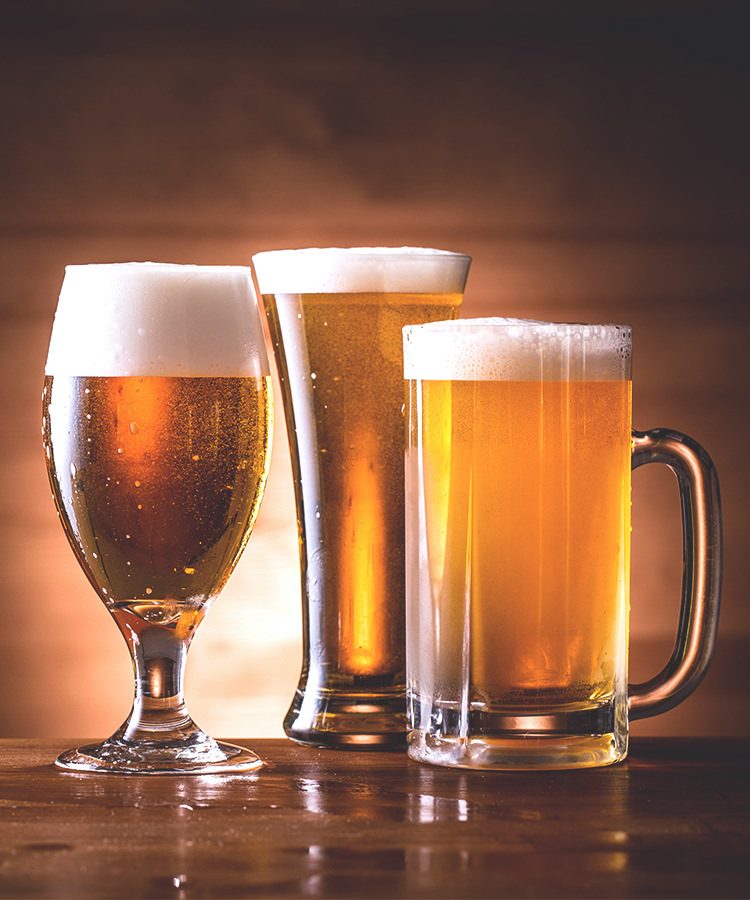Pilsners are clean-slate beers. Best known for versatile drinkability, these are refreshing, palate-rinsing, and thirst-quenching brews. The style started with the Pilsner Urquell brewery in Plzen, Czech Republic in 1842, and has since been adapted around the world.
Today the most prominent pilsner-style beers come from the Czech Republic, Germany, and America. Pilsners from these three countries have enough stylistic similarities to share the category, but each has certain characteristics that set it apart. According to the Brewers Association and the Beer Judge Certification Program, here are the primary differences by country.
Czech, or Bohemian Pilsner
The birthplace of this beer is sealed in language: Pilsner means “from Pilsen” in Czech.
Czech-style pilsners are moderately tinted pale yellow with low-to-medium noble hop presence. They are characterized by slightly sweet, toasted biscuit and bready aromas and flavors, as well as moderate to low carbonation.
More than 150 years after its debut, Pilsner Urquell remains a standard bearer. The name is used freely worldwide, but in the Czech Republic, only Pilsner Urquell is called a pilsner, according to the BJCP.
German Pilsner, or Pils
“The use of the term ‘Pils’ is more common in Germany than ‘Pilsner’ to differentiate it from the Czech style, and (some say) to show respect,” the BJCP writes on the history of German pilsners.
The style was adapted from the Czech style in the 1870s to better suit Germany’s mineral water and domestic hops. It’s lighter in body and color than Czech pilsners, and tends to be drier and crisper. The bitterness is more lingering, and the carbonation is higher. German pilsners pour with a pure white head and have a moderate and pronounced noble European hop aroma and flavor that come from late hopping during the brewing process.
American Pilsner, or American Lager
The much-maligned American pilsner (it can’t even be marketed as a pilsner in Europe) is making a comeback, but its humble roots date to the 1800s. German immigrants brought traditional pilsner brewing styles to America when they emigrated in the mid-19th century. Anheuser-Busch was one of the breweries that started with German immigrants and German brewing styles. American pilsners today are still closer to the German style, with a few key differences.
“Up to 25% corn and/or rice in the grist should be used,” the Brewers Association writes. “This style represents the classic and unique pre-Prohibition American-Style pilsner.” The style generally has medium-low to medium sweet malt flavor, and medium to high European hop notes.
American pilsners have “significantly less flavor, hops, and bitterness than traditional European Pilsners.” the BJCP notes.
Today, however, innovative craft breweries like Firestone Walker, Victory Brewing, and Oskar Blues are experimenting with adding bold American hops to their beers.
